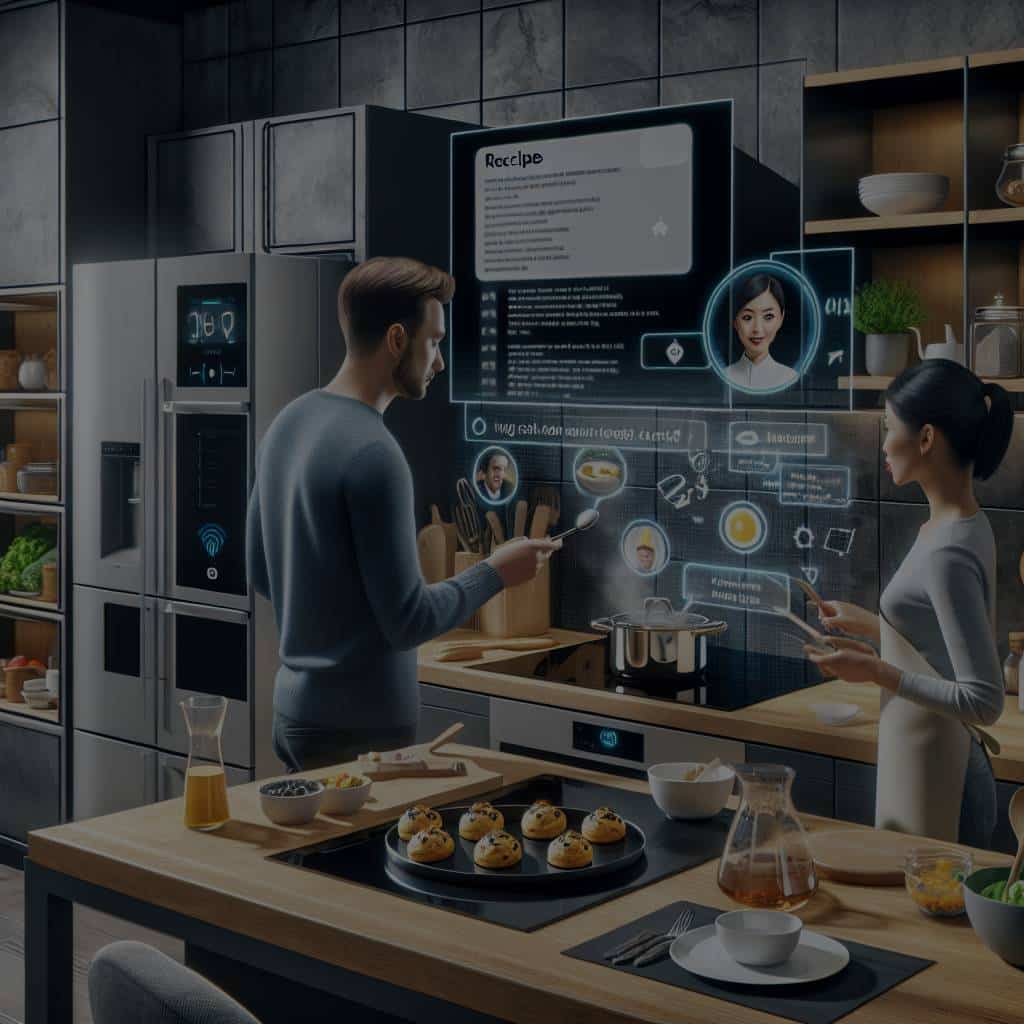Can Voice-Activated AI Provide Real-Time Cooking Assistance in Smart Kitchens?

As technology continues to evolve at a rapid pace, it’s inevitable that our everyday environments adapt to incorporate these advancements. The kitchen, a hub of activity and creativity for many households, is no exception. With the introduction of artificial intelligence (AI) and smart appliances, our cooking experiences are being transformed.
In this context, voice-activated AI presents a significant development, promising a future where users can receive real-time cooking assistance based on their needs and preferences. However, is this truly feasible, or is it just another tech-fueled pipe dream? Let’s delve into the details, exploring the potential of voice-activated AI in revolutionizing the way we cook in our kitchens.
In parallel : How do I generate images for tutorials or practical guides ?
Adapting to User Preferences: A Personalized Cooking Experience
The smart kitchen of the future aims to cater to the unique needs of its users. If one user is a seasoned home chef while another is a novice, their requirements from the kitchen appliances differ drastically. Here, voice-activated AI can provide personalized cooking assistance, adapting to each user’s skill level, dietary restrictions, and preferences.
Voice-activated AI systems can store and use data based on user behavior and preferences, suggesting recipes that align with their taste and dietary requirements. For instance, if a user prefers low-carb meals, the AI can suggest suitable recipes, provide step-by-step cooking instructions, and even recommend ingredient substitutions to align with the user’s dietary preferences.
Also to read : How Might Intelligent Traffic Management Systems Alleviate Urban Congestion?
Furthermore, these systems can learn from users over time, progressively refining their recipe suggestions and cooking instructions. This user-based approach makes cooking an enjoyable and personalized experience, rather than a chore, especially for those who might be intimidated by the process.
Smart Appliances: The Backbone of AI-Assisted Cooking
A crucial aspect of utilizing voice-activated AI in the kitchen involves integrating this technology with smart appliances. From refrigerators that monitor your food inventory to ovens that adjust their temperature based on the dish you’re cooking, smart appliances are paving the way for a truly interactive cooking experience.
These devices can communicate with the AI system, providing real-time data that can be used to provide relevant cooking advice. For instance, if your refrigerator detects that you’re running low on a particular ingredient, the AI system can suggest alternative recipes or recommend a different cooking technique that doesn’t require that specific ingredient.
Smart appliances also allow for hands-free operation, a significant benefit when your hands are busy preparing a meal. Voice-activated controls mean you can adjust your oven’s temperature, set a timer, or even check on your food’s progress without having to interrupt your cooking.
Voice-Activated AI: Step-by-Step Assistance and More
The beauty of voice-activated AI lies in its ability to provide real-time, step-by-step cooking assistance. Whether you’re a newbie trying to master the basics or an experienced cook trying a complex recipe for the first time, having a virtual assistant guide you through the process can be invaluable.
Imagine you’re trying to bake a cake for the first time. Instead of constantly referring to a written recipe, you can simply ask your AI assistant for the next step or clarification on a specific technique. If you’re uncertain about how to separate egg yolks, for instance, the AI can provide a detailed explanation or even show a video tutorial.
The AI can also monitor your progress, using data from smart appliances to provide precise cooking times and temperatures, ensuring that your dishes turn out perfectly every time.
The Challenges and Potential Solutions
Despite the promising potential of voice-activated AI in the kitchen, it’s essential to acknowledge the challenges it presents. User privacy is a significant concern, as these systems require access to personal data to function effectively.
However, advancements in privacy protection measures, such as secure data encryption and stringent privacy policies, can mitigate these concerns. Additionally, users need to be educated about how their data is used and the measures in place to protect it.
Another challenge is ensuring the technology is accessible and user-friendly. Technology can often be intimidating for those who aren’t tech-savvy, and this can deter potential users. However, with intuitive interfaces and clear, user-friendly instructions, it’s possible to make voice-activated AI systems accessible to everyone, irrespective of their technical prowess.
While we still have some way to go before voice-activated AI becomes a staple in every kitchen, the potential it holds for transforming our cooking experiences is undeniable. The future of cooking promises to be smarter, more personalized, and more interactive than ever before.
Integration of Augmented Reality and AI for an Immersive Cooking Experience
Voice-activated AI in smart kitchens isn’t just about receiving verbal instructions. The integration of augmented reality (AR) with AI can bring about a more immersive and engaging cooking experience. This is the next step in the evolution of smart kitchens and cooking appliances, where users can interact with the technology in a more tactile and visual manner.
Augmented reality in combination with voice-activated AI can provide a hands-on experience, making it easier for users to understand and follow cooking instructions. By overlaying visual cues and interactive elements onto the real world, AR can guide users through each step of the cooking process.
For example, imagine baking a pizza using an AR-enabled smart cooktop. As you knead and stretch the pizza dough, the AR system can project visual guides onto the cooktop, helping you achieve the perfect shape and thickness. Similarly, when it’s time to add the toppings, the AR can highlight the areas where each ingredient should be placed, ensuring even distribution and a well-balanced pizza.
Moreover, augmented reality can enhance the utility of voice assistants, allowing them to provide real-time visual feedback and corrections. For instance, if you’re chopping vegetables incorrectly, the voice assistant can alert you and the AR can demonstrate the right technique.
While this might sound futuristic, companies such as Blue Apron are already exploring these possibilities. The meal kit service has patented an AR application that provides step-by-step cooking instructions, bringing a new dimension to the cooking experience.
Conclusion: The Future of Cooking with Voice-Activated AI
While there are challenges to overcome, the potential of voice-activated AI in revolutionizing our cooking experiences is undeniable. The smart kitchen is evolving, integrating artificial intelligence, smart appliances, and even augmented reality to make cooking more accessible, personalized, and enjoyable.
But what does this mean for us, the home cooks?
In essence, it means less food waste as smart devices provide us with alternative recipes based on available ingredients. It means a more personalized cooking experience as the AI adapts to our dietary needs and preferences. It means less stress in the kitchen as voice assistants guide us through each step of the cooking process. And it means an immersive and interactive experience as augmented reality brings a new dimension to our cooking endeavors.
Furthermore, with companies such as Blue Apron leading the way, we can expect to see more innovation in this field, making the idea of an AI-powered kitchen a reality sooner than we might think.
The future of cooking, powered by voice-activated AI, promises to be smarter, more efficient, and more enjoyable. As we welcome this new era, it’s exciting to imagine the possibilities that lie ahead in our smart kitchens. From AI-powered cooking to AR-enabled smart cooktops, the kitchen of the future is set to transform our culinary adventures.
